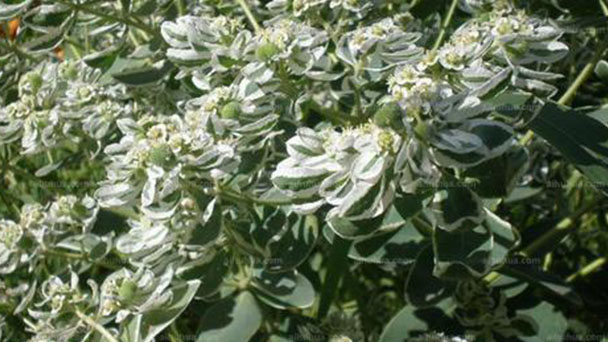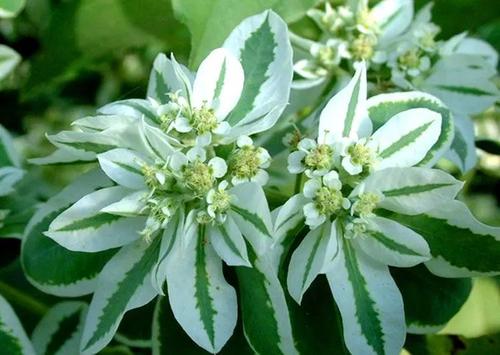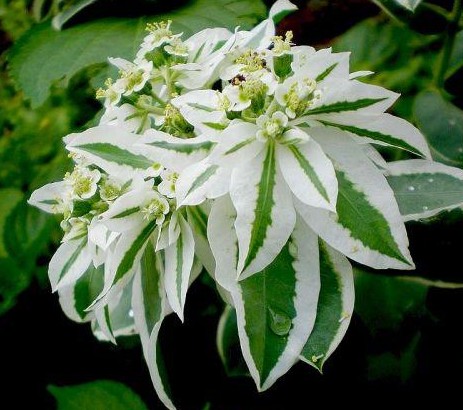How to grow and care for snow on the mountain
Written by Maggie
Mar 30 2021

The root system of Snow on the Mountain is thin, with many branches, and the highest growth is between 60 and 80 centimeters. So how to grow and care for Snow on the Mountain? Let's look down together.
Lighting care for growing snow on the mountain
Snow on the Mountain likes a dry environment with plenty of sunshine. In summer, when the temperature is around 30° C and under direct sunlight, the leaves of Snow on the Mountain become slightly smaller and the growth season becomes very slow. Make sure you get plenty of sunlight in winter when temperatures are low. Before entering winter, Snow on the Mountain is easy to die. When we grow and care for snow on the mountain, it is necessary to move the Snow on the Mountain potted plant indoors before entering winter, so that it can live to the next spring. Sowing in winter, summer is easy to die of high temperatures.
Humidity care for growing snow on the mountain
Snow on the mountain is not suitable for a low air humidity environment. Single flowers fade quickly when humidity is low, but dry leaves should be kept at night.
Temperature care for growing snow on the mountain
When we grow and care for snow on the mountain in winter, when the temperature is below 4℃, Snow on the mountain will go dormant or die. When the temperature is too high, Snow on the mountain will stop growing. Snow on the mountain grows best when the temperature is about 15~25℃.
Soil care for growing snow on the mountain
The soil of Snow on the Mountain requires a loose, rich, deep layer. When we grow and care for snow on the mountain, the soil should be wet to avoid the death of Snow on the mountain caused by soil water.

Snow on the mountain flowering
The actual flowers are rather unremarkable. They are small and greenish-yellow.
At bloom time they appear at the ends of the stems in the middle of the summer and remain until early in the autumn.
The surrounding rounded color white bracts are flowerlike in appearance and are quite attractive.
Snow on the mountain pest or disease control
These plants are subject to root rot if left standing in water.
When we grow and care for snow on the mountain, it is very important to provide loose, airy, light, well-draining soil to avoid problems with fungal infection.
As with most spurge, pests are unusual; however, spider mites and mealybugs may be a problem if plants are overcrowded or overwatered.
Overcrowding and overwatering will cause trouble with powdery mildew.
Overall, choosing an appropriate planting setting, providing ample sunlight and air circulation, and watering the right amount will produce trouble-free snow on the mountain.
How To propagate snow on the mountain
Even though snow on the mountain does reseed themselves easily, growing from seed is not always the best way to go when you start out.
Instead, you may want to begin with plant cuttings.
Take care to protect yourself from the milky white sap, which is irritating to your skin.
If you do decide to grow snow on the mountain from seed, start the seeds indoors a couple of months before your last expected frost date.
Alternately, you may be able to sow them directly into the soil outdoors early in the springtime.
Seeds need a consistent temperature of 60° degrees Fahrenheit (15° C) to germinate.
You should see new growth within a couple of weeks.
Follow seed packaging instructions for your hardiness zone.
Choose strong, healthy stems as cuttings.
Remove lower leaves and dip the stems in rooting powder before placing them into a light, airy, well-draining rooting medium.
Water them in and place the container in a consistently warm area where the cuttings can receive bright, indirect sunlight.
After a couple of weeks, the cutting should produce good roots and begin to grow new vegetation.
When this happens, transfer them to their permanent container or outdoor setting.
Add a little organic matter to the planting hole to provide the young plants with extra nourishment for a good start.

Latest Updated
- Benefits of Bugleweed - 7 Science-backed Health Benefits
- Bugleweed Dangers & Side Effects - Is It Poisonous?
- How to Plant Evergreen Trees - What You Should Know
- When to Plant Evergreens - Grow Guide for Evergreen Trees
- 12 Wonderful Evergreen Shrubs for Your Garden
- 12 Popular Evergreen Plants with Pictures for Beginners
- When And How To Prune A Lilac Bush Like a Pro
- How to Grow & Care for Lilac Vine (Hardenbergia Violacea)
- Japanese Lilac Tree (Syringa Reticulata) Care & Propagation Guide
- Shumard Oak Pros and Cons - What to Know
Popular Articles
- Winter maintenance of Antirrhinum Majus
- How to Grow Terminalia Mantaly Tree
- How to Grow and Care for Crossostephium Chinense
- How to grow Antirrhinum Majus in spring
- Peristeria Elata (Dove Orchid) Profile: Info & Care Guide
- Underwatered Snake Plant (Sansevieria Trifasciata) - Signs And How To Fix
- How to Care for Brazilian Jasmine Plant (Mandevilla Sanderi)
- How to Grow & Care for Graptopetalum Purple Delight in Summer
- Rosa Chinensis (China Rose): Plant Growing & Care Tips
- How to Care for Baby Sun Rose (Aptenia Cordifolia)